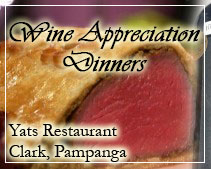About wines from Pomerol, Bordeaux, France
About Wines from Pomerol, Bordeaux, FranceOf all the more famous regions of Bordeaux I think it is Pomerol that perhaps I know least well. This is perhaps a somewhat strange state of affairs, as after all Pomerol is the smallest of all the well known appellations of Bordeaux, especially when we compare it to neighbouring St Emilion, the vineyards of which cover more than 5000 hectares, dwarfing Pomerol, which boasts less than 800 hectares. My point is that it should not, perhaps, take too long to become accustomed with its wines, especially as I have spent no less time in Pomerol than I have in any other appellation around the Garonne, Dordogne and Gironde. I have tasted many of the top wines of the commune, including Petrus, Trotanoy and other wines from the Jean-Pierre Moueix stable; I have visited top estates, such as Jacques Theinpont’s Le Pin in 2008, and perhaps less celebrated names such as Taillefer, home to Catherine Moueix, in late 2006. Vertical tastings that I have attended, such as a mini-vertical of Vieux Chateau Certan a few years ago, show that there are some fabulous wines being produced here, even in lesser vintages. I have no prejudice against the region, that is for sure; the exotic spice and opulent yet fresh fruit that can be found in the wines excites my palate in a way that no other Bordeaux does. I think it is merely that my own vinous education has concentrated so wholeheartedly on the left bank, and perhaps it is also the case that the left bank has, in the past, offered more value wines which offer a true insight into what the vineyards there are capable of, whereas with Pomerol perhaps this simply hasn’t been the case?
Pomerol – A Different Story
Although Pomerol has a long history of viticulture and winemaking it is not one that has much in common with the development of the left bank appellations, or indeed with neighbouring St Emilion. The vine has been cultivated on the right bank, including Pomerol, since the time of Roman occupation, and the names of some estates – notably Figeac and Ausone (both in St Emilion, not Pomerol) date from this era. On the left bank viticulture in Graves and Sauternes has flourished since Medieval times, but in Pomerol it has waxed and waned, and during the Hundred Years’ War the vineyards were abandoned altogether. It was not until the 15th Century that there was any replanting, preceding the draining of the Médoc by more than a hundred years. Despite this the region remained an obscure one in viticultural circles, thought of by many as little more than a satellite of St Emilion. There was no influx of rich landlords as there was around St Estèphe, Pauillac, St Julien and Margaux; Pomerol had no Marquis Nicolas-Alexandre de Ségur to name as the Prince des Vignes, and no Baron Hector de Brane to similarly christen as Napoléon des Vines. There were no wealthy bankers or landed gentry interested in this rural backwater, and thus the landscape remained one dotted with farmhouses, criss-crossed by country lanes, with no grand châteaux, no mansard roofs, and barely a tiled turret to be seen.
The wines of this supposedly ‘minor’ region were not widely appreciated, and the vignerons and merchants that had settled here worked had to develop export markets for their wines. They found buyers in France, Holland and particularly Belgium, and the market they built up in the latter country perhaps goes some way to explaining the Belgian presence in Pomerol that exists today. The wines of the left bank, however, were largely exported to England, and thus British consumers developed no awareness of Pomerol or the quality of its wines. It was not until the 1950s that British merchants woke up to the wines and began to import them into the UK, and even then the prices of many of the wines were extremely favourable, especially compared to the astronomical prices some of them fetch today. And there is one further difference that marks out Pomerol; whereas the Médoc and Sauternes, and subsequently Graves and St Emilion, were all classified – arguably useless classifications today, but also without doubt useful in publicising the best properties at the time – Pomerol never underwent this process, and today it remains the only major appellation of the region to have no classification.
Pomerol – the Appellation
Although small, with just 784 hectares – or thereabouts – of vines, the terroir of Pomerol is certainly not homogenous, and is due some consideration. The vineyards are located to the west of those of St Emilion, and are closely related to the suburbs of Libourne. They are delimited north and south by two rivers, the Barbanne and the Taillas, to the east by the vineyards of St Emilion and the town of Pomerol itself, and to the west by the D910 as it runs down towards and into Libourne, with suburban streets including the boulevard de Beauséjour, avenue Georges-Clemenceau, rue du Docteur-Nard and the avenue de l’Europe – all easily pinpointed on any decent map – forming the boundary. Further out in the appellation there is a subtle plateau which is dominated by gravel with clay, and it is these soil types that play host to the better vineyards. Inspection of the soils themselves reveals a considerable variation in gravel density and size of stone, even when comparing one vineyard to the next, although this isn’t a feature unique to Pomerol by any means. A more significant change comes as you travel west through the appellation, when the soils become more sandy, and the quality of the wines may not be as high with this terroir. In addition, the clay subsoil here – known as crasse de fer – is particularly iron rich, and portions of it extend across the appellation. The Petrus vineyards are marked by it, as are those of Taillefer, the name of which translates literally as to cut iron.
Like St Emilion, the clay soils here favour the Merlot grape which dominates the appellation, accounting for 80% of all the vines planted. Cabernet Sauvignon and Cabernet Franc trail in at the rear, although a few estates are notable for have significant plantings of these two varieties, sometimes accounting for more than half of the individual vineyard. Vieux Chateau Certan is a case in point, although Merlot still dominates slightly here, accounting for 60% of all the vines, with 30% Cabernet Franc and 10% Cabernet Sauvignon. The absolute predominance of Merlot in the appellation as a whole, however, may mean in some vintages the majority of the harvest can be lost. Merlot flowers earlier than the two Cabernets and thus it is more vulnerable to spring frosts and reduced or irregular flowering and fruit set.
The Unclassified
Notable Properties
Although I have been content to criticise those that put too much stock in Bordeaux classifications, which are either outdated or rendered meaningless by internal political wrangling, one function that they do serve is to provide a loose framework for the discussion of the wines. Without one, though, I will resist the vaguely ridiculous notion that I should invent a classification of my own, and simply deal with the properties according to my experience of them. Perhaps one that I know best is Vieux Chateau Certan, as I have tasted a number of maturing vintages and have even been taken to adding a few vintages to the cellar, especially the highly successful 2004. Even weaker vintages, such as the 1993, were impressive. There are many other estates producing wines of similar quality, or indeed higher quality, where I have tasted a few vintages, most notably Petrus, Trotanoy, Le Pin, Gazin, La Conseillante, Clinet and more. The first two of these are wines of the Moueix stable. Petrus moved from the ownership of Mme Lacoste-Loubat to being jointly run with the help of Jean-Pierre Moueix, and today it is under the sole control of Jean-Pierre’s son, Christian; the once relatively inexpensive wines are today some of the most expensive in Bordeaux. And they are also some of the best. This latter characteristic is also true of Trotanoy, which has turned in a stupendous performance in some vintages, and my experience of both mature vintages, namely the fabulous 1961, and a much more recent year such as 2007 shows that the quality of this vineyard can shine through in both excellent and poor vintages. As for Le Pin, this is a much more recent story; the proprietor here is the aforementioned Jacques Thienpont of Belgium, and when entertaining visiting journalists during the primeurs he serves the wines with assistance from his son, the youthful but trilingual Freddy. The story here perhaps encapsulates so much of Pomerol; an unremarkable vineyard which has been moulded into one of worldwide repute, and the prices have risen dramatically as a result; one bottle will cost you more than a case (or indeed several cases) of many comparable wines. And the estate is graced not by any grand chateau, but by a tumbledown farmhouse with cracked and patchy rendering, and a patch of mud for a garden. The wines, however, can be fabulous. Yes, to me it seems that Le Pin is Pomerol – albeit a Pomerol on steroids – in a nutshell.
Source: http://www.thewinedoctor.com/regionalguides/bordeaux13pomerol.shtml
Philippines has many top rated event venues for wedding ceremony and wedding reception, especially up in the north in Subic and Pampanga.
Clark Freeport located in Pampanga Philippines is just 70 minutes from Manila. Many wedding couples travel out of town for a getaway to hold wedding receptions and beach wedding ceremony in the beautiful and highly recommended hotels and resorts in Clark.
Clark’s neighbor Angeles City provides nightlife and bars for entertainment. However, most guests prefer to stay inside Clark Freeport for safety and security reasons. Wedding venues for outdoor reception are very popular in Clark. Brides and grooms travel out of town north of Manila to get married in Clark.
For any assistance in planning and organizing a wedding ceremony, indoor or outdoor garden reception or to find other wedding service providers, contact us ( link to contact page)
http://www.PhilippinesWeddingVenue.com
Philippines Wedding Venues Service Center
Creekside Road corner of Centennial Road,
Central Business District, Clark Freeport Zone,
Pampanga, Philippines 2023
Tel: (045)599-5949 0917-520-4403 0922-870-5177
Manila Sales Office
3003C East Tower, Phil Stock Exchange Center,
Exchange Rd Ortigas Metro Manila, Philippines 1605
(632) 637-5019 0917-520-4393 Rea or Chay
Email: Wedding@Yats-International.com
For more information about hotels and resorts near Manila in Subic, Angeles City, Clark, Pampanga, Philippines log on to http://www.HotelClarkPhilippines.com.
To inquire with the beach resort hotel in Clark Pampanga visit http://www.ClearwaterPhililippines.com
For more information about wine, log on to http://www.YatsWineCellars.com. For an exciting wine shopping experience during your visit to Angeles City, Clark, Pampanga, Philippines, visit the famous wine shop Clark Wine Center, for more information log on to http://www.ClarkWineCenter.com









